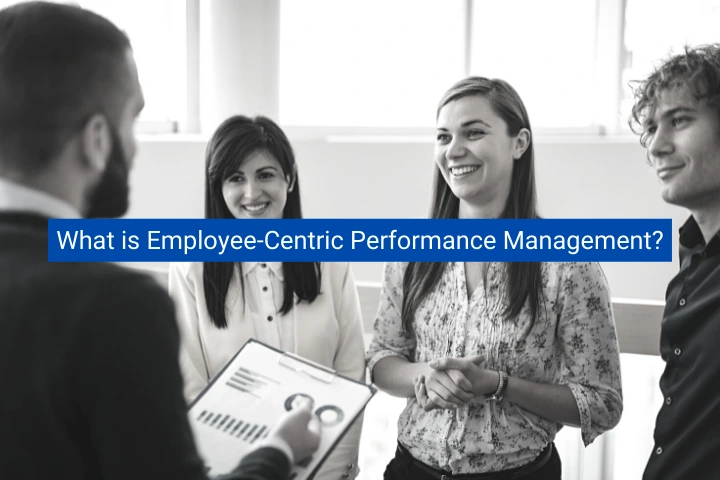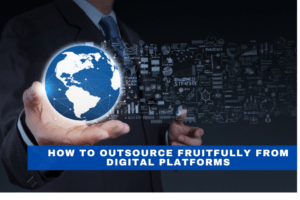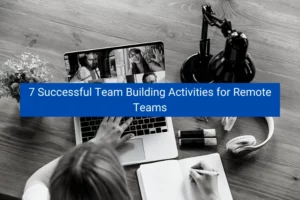Employee experience is at the heart of the employee-centric talent management paradigm, which considers all aspects of talent management processes and people practises. This is crucial for generating a positive employment experience that keeps employees motivated and engaged.

Information and data may flow effortlessly from one talent management procedure to the next using an employee-centric approach. It gives people the assurance that performance evaluations, growth plans, learning outcomes, and career dialogues result in transparent and equitable access to awards and recognition, development opportunities, and internal mobility.
Because technology helps each stage of the employee journey, it is put in the outside circle. From employee recruiting to onboarding, performance, recognition, and reward, learning and career development, and internal mobility, technology drives productivity and provides a seamless experience.
Related: What is Talent Management? Why Talent Management is Important?
Culture and wellbeing
Every facet of an organization's talent management is influenced by its culture. Organizations must establish an environment that engages employees and entices others to join in order to unleash people's potential. It is necessary for people to:
- are confident in bringing their true selves to work
- have a sense of being cherished and inspired
- have leaders, managers, and team members on your side
- be praised for their achievements
- be provided with opportunities for growth and advancement in their careers.
Employees who are highly engaged are committed to your company's vision and values. Organizations must comprehend the extremely personal and individual character of engagement, as well as how it affects commercial results.
Leadership is at the forefront of creating a culture that encourages employee engagement. To shift personnel management to focus on employee experience, executives must have a clear vision and provide leadership support. Managers must go beyond quotas, compliance training, and diversity checkboxes to become coaches, grooming employees for present and future responsibilities.
Organizations will need to enable greater flexibility for both where and when employees work, as well as how the job is done, in order to support health, wellbeing, and work-life balance.
Related: 7 Common Mistakes That Good Leadership Don’t Make
Recruitment and onboarding
To win the war for talent, you must take a candidate-centric approach to hire. Today's candidates deserve a consumer-grade experience and vote with their feet. Whether they desire to work for you or a rival will be determined by their recruitment experience. On average, 14% of millennials and Gen X job searchers say they would decline an offer if the application process lacked HR technology. A whopping 26% of Gen Z hopefuls would turn down a job offer due to a lack of technology. The onus is on businesses to use technology to create a smooth, painless recruitment process.
Organizations must use a two-pronged approach to attract and retain the top talent: develop a seamless and engaging candidate experience that improves the organization's outcomes Companies want the right people in the right jobs at the right times. Attracting top people requires a well-thought-out employer brand and employee value proposition.
75% of job searchers investigate a firm before applying for a position, so a strong employer brand is essential to attracting top talent. According to LinkedIn data, companies with strong employer brands attract 50% more eligible candidates and have a 50% lower cost-per-hire.
People desire to work for companies whose culture, mission, and values are similar to their own. Creating, expressing, and displaying a compelling employee value proposition (EVP) on social media, career sites, and throughout the recruitment process is crucial to attracting top talent.
Related: How can YouTube Contribute to the Recruitment Process?
Organizations are optimising the whole recruitment process to reflect their employer brand, going beyond initial impressions. Prioritizing candidate experience not only builds a great employer brand but also has an impact on the corporate brand. Many prospects are current or potential customers, and if they have a bad recruiting experience, they may decide to go somewhere else.
Many businesses struggle to find and retain talent, but this does not have to be the case. Having pools of warm prospects and developing continuous talent pipelines can help with hard-to-fill roles and volume recruiting. Talent pools should also include high-quality unsuccessful candidates or silver medalists. This allows hiring teams to engage with suitable, pre-screened prospects for future positions, improving the candidate and HR Manager experience.
It's just as vital to have a good onboarding process as it is to hire the proper employees. Onboarding is the process of introducing new employees to the people, technologies, and experiences that will help them succeed, as well as setting the tone and expectations for the future. When onboarding is a seamless extension of the recruitment process, it boosts employee engagement and ensures that new hires get up to speed quickly. It's the first and most important stage in an employee's ongoing education.
Related: How Do You Deal With Bad Workforce Culture?
Performance management and rewards
The employee-centric talent management paradigm enables organisations to provide a seamless, employee-centric recruitment and onboarding experience that helps employees succeed. How can you keep employees as interested and eager as they were on day one as they settle into their roles? The answer can be found in everyday performance management, which is related to flexible reward and recognition programmes.
The principles of performance management should encourage productivity and engagement by aligning individuals with corporate goals, reviewing and delivering feedback, and recognising and rewarding outstanding performers. Traditional yearly performance reviews, on the other hand, have proven to be ineffective.
As a result, several businesses have used continuous feedback methods to boost employee engagement and productivity. 76% of organisations have already changed performance management to be more continuous, and 81% plan to or have already shifted to regular performance conversations centred on future career and growth.
Regular feedback not only improves engagement and productivity, but it also allows you to:
- Identifying appropriate and timely training and development opportunities;
- individuals must be reconnected to the organization's aims on a regular basis;
- organisational agility: the capacity to pivot and realign goals in response to changing business needs swiftly.
Performance management is founded on a foundation of constant feedback, acknowledgement, and improvement in an employee-centric talent management framework. Effective performance management should include the following elements:
- link employees to the organization's purpose and mission by clearly explaining how personal goals contribute to the achievement of organisational goals;
- Assist employees in developing their own KPIs or goals. Those who are included in the goal-setting process are 3.6 times more likely to be involved than those who aren't.
- Incorporate regular feedback and recognition into day-to-day people leadership to foster a high-performance culture. Constructive feedback given on a regular basis boosts confidence and aids in the identification of areas for improvement.
A temporal discrepancy between performance feedback and reward is one of the issues that many organisations face. Despite the fact that more than three-quarters of businesses are transitioning to a continuous feedback approach, just about 10% modify salaries more than once a year.
How can companies create a wonderful employee experience by aligning rewards with the new era of continuous performance management?
Related: Performance Management System and KPIs
- Individualized incentives: When it comes to incentives, one size does not suit all. Organizations may generate meaningful, diverse, and personalised rewards by knowing individual motivators. Only 8% of businesses feel their rewards programme is "extremely effective" in terms of providing a personalised, customizable solution. Rewards programmes must be established with and for employees if they are to have a positive and long-term impact.
- Increased frequency: People who receive little rewards on a regular basis, such as vocal appreciation or thanks, are eight times more engaged than those who only receive an annual bonus.
- Transparent and equitable processes: The organisation must clearly disclose the process for giving rewards to employees, and these systems must be seen as equal and fair. Employees who don't grasp how their salary is calculated are 60% more likely to leave the company. Align reward and recognition activities with the organization's strategic objective to get the most out of them.
For Human Resource, Payroll and many more HR Services, visit our website https://lingueeglobal.com/



